Unjustice: Depopulation of Chagos Archipelago must not be forgotten
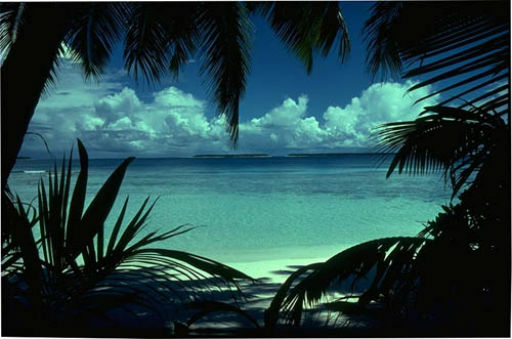
Officially part of the British Indian Ocean Territory, the Chagos Archipelago were home to the Chagossians for more than a century and a half until the United Kingdom evicted them in the early 1970s in order to allow the United States to build a military base on Diego Garcia, the largest of the Chagos Islands. Since 1971, only the atoll of Diego Garcia is inhabited, and only by military and civilian contracted personnel.
The UK has resisted all demands made in its courts by the Chagossians to be allowed to return to the outer islands of the archipelago. The claim that the coral islands would be uninhabitable within decades because of rising sea levels due to climate change has been main argument of the British refusal. Sea-level rise is bad news for many island nations, but it may not be severe enough to prevent Chagos islanders from returning home four decades after they were expelled by UK authorities. Chagossians currently live in Mauritius, the Seychelles and the UK.
The British government’s Cabinet recently established the The Chagos Archipelago as the world’s largest marine reserve, larger than the country of France or the state of California. The protection of the marine reserve will be guaranteed for the next five years thanks to the financement of the Bertarelli Foundation. On December 3, 2010, Wikileaks released a document revealing that the marine reserve was established primarily in order to legally block any attempts by the Chagossians to return to their homeland.

Sea-level rise controversy
A management plan for the islands, written in 2003 by biologist Charles Sheppard at the University of Warwick, UK, said annual sea-level rise since a tide gauge was installed in 1988 had averaged 5.4 millimetres a year – twice the global average. He added that the figure was accelerating, and earlier this year at an event at the Royal Geographical Society in London, he revised the annual figure to 12.0 millimetres. But Philip Woodworth, a researcher at the UK’s National Oceanography Centre in Liverpool don’t agree with these figures and called it “definitely wrong“. Ocean-current fluctuations create high variability and there are legitimate arguments about the precise underlying rise. Based on an analysis of the same data, Woodworth gave the best estimate that sea level has been rising by just 2.2 millimetres a year since 1988. Sheppard dismisses the new findings.
Woodworth points that whatever the true measure is, it should certainly not be used for extrapolation of future sea levels. And the British government have repeatedly cited such extrapolations as a “clear and compelling” reason why resettlement is “unfeasible”. (NewScientist)
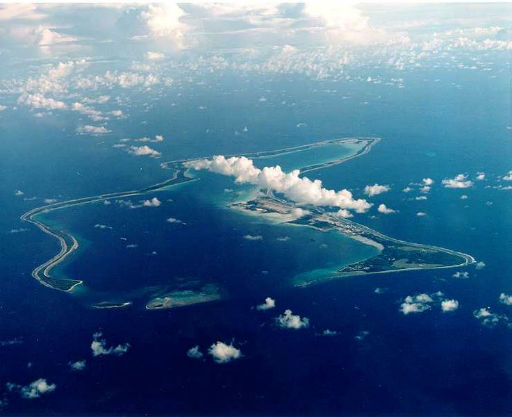
Diego Garcia depopulation controversy
In 1972, the UK decided to close all the remaining plantations throughout the Chagos, and deported the Ilois to their ancestral homes on either the Seychelles or Mauritius. The then-independent Mauritian government refused to accept the islanders without payment, and in 1973, the UK gave the Mauritian government an additional ₤650,000 to resettle the islanders. However despite this islanders often found themselves in woefully inadequate housing and living conditions. The entire population of the Chagos, including the Ilois, was removed to Mauritius and the Seychelles by 27 April 1973
The islanders were known as the Ilois (one French Creole word for “islanders”) and they numbered about 1,000. They were of mixed African and Malay descent and lived very simple, spartan lives in their isolated archipelago. Few remains of their culture have been left, although their dialect is still spoken by some descendants in Mauritius and the UK.
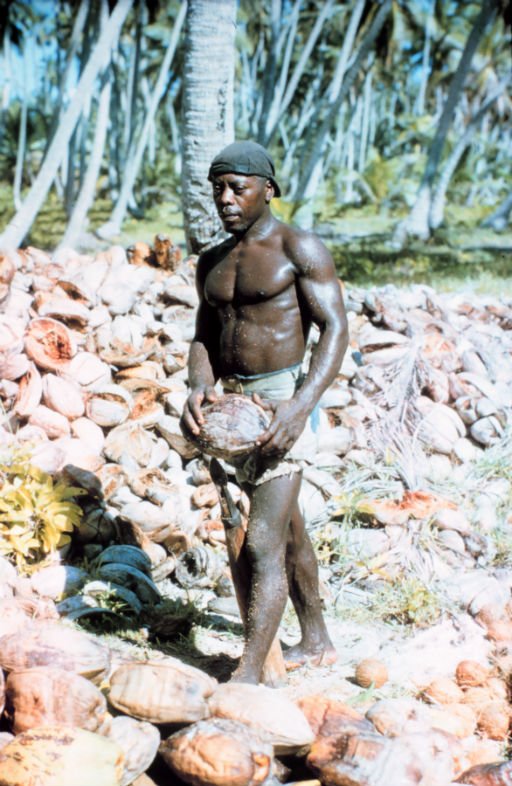
Between 1967 and 1973, the entire population was involuntarily removed from the islands and relocated to Mauritius and the Seychelles to make way for a joint United States-United Kingdom military base on Diego Garcia.
The case has not been heard by any international court of law. No right of petition exists “in right of” the British Indian Ocean Territory to either the European Court of Human Rights or the UN Human Rights Committee.
According to Article 7(d) of the Rome Statute of the International Criminal Court which established the International Criminal Court (ICC), “deportation or forcible transfer of population” constitutes a crime against humanity if it is “committed as part of a widespread or systematic attack directed against any civilian population, with knowledge of the attack”. The ICC is not retroactive: alleged crimes committed before 1 July 2002 cannot be judged by the ICC.
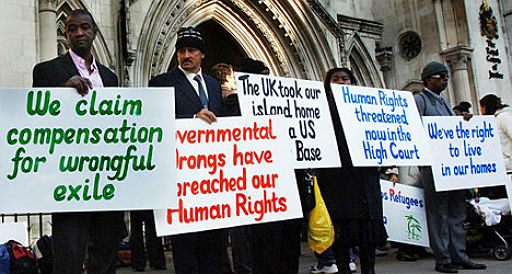
Diego Garcia US military base “Camp Justice”
In November 1965, the UK purchased the entire Chagos Archipelago from the then self-governing colony of Mauritius for £3 million pounds to create the British Indian Ocean Territory (BIOT), with the intent of ultimately closing the plantations to provide the uninhabited British territory from which the U.S. would conduct its military activities in the region. On 30 December 1966, the U.S. and the UK executed an Agreement through an Exchange of Notes which permit the U.S. to use any island of the BIOT for defense purposes for 50 years (through December 2016), followed by a 20 year optional extension (to 2036) to which both parties must agree by December 2014. As of 2010, only the atoll of Diego Garcia has been transformed into a military facility.
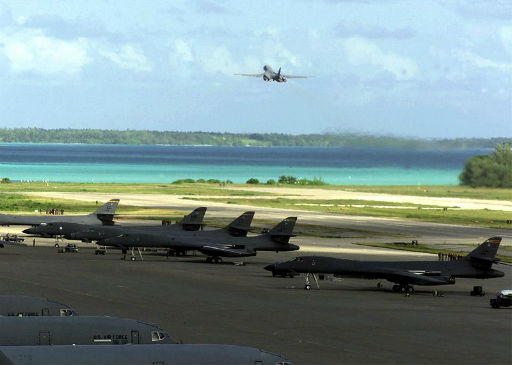
In March 1971, U.S. Naval construction battalions (SEABEES) arrived on Diego Garcia to begin the construction of the Communications Station and an airfield. To satisfy the terms of an agreement between the UK and the U.S. for an uninhabited island, the plantation on Diego Garcia was closed in October of that year. The plantation workers and their families were relocated to the plantations on Peros Bahnos and Solomon atolls in the northwest of the archipelago; those who requested were transported to the Seychelles or Mauritius.
Currently, the only human structures on the islands are located in the joint defence and naval support facility on Diego Garcia. Other uninhabited islands, especially in the Salomon group, are common stopping points for long-distance yachtsmen traveling from Southeast Asia to the Red Sea or the coast of Africa, although a permit is required to visit the outer islands.
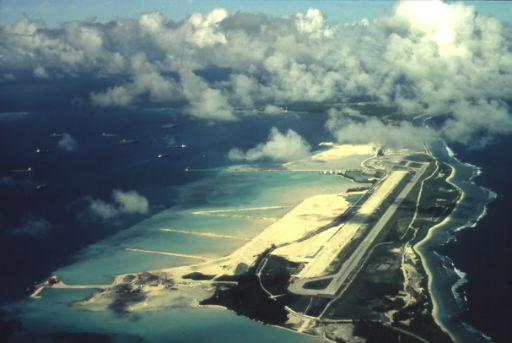
Political issues
Diego Garcia is currently the only inhabited island in the Chagos, all of which comprise the British Indian Ocean Territory, usually abbreviated as “BIOT”. It is an Overseas territory of the United Kingdom, and the Government of the BIOT consists of Commissioner appointed by the Queen.
In 1965, as part of a deal to grant Mauritian independence, the Chagos Archipelago was split off from the Colony and came to form the British Indian Ocean Territory. The territory’s new constitution was set out in a statutory instrument imposed unilaterally without any referendum or consultation with the Chagossians and it envisaged no democratic institutions.
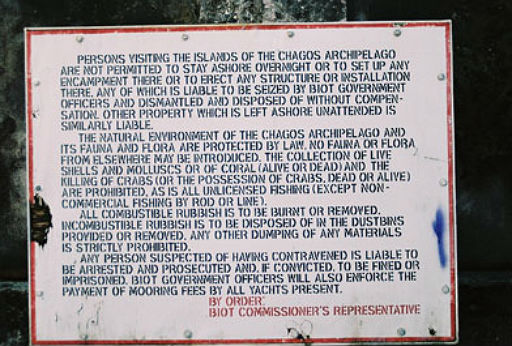
There are two transnational political issues which affect the BIOT, through the British government.
First, the island nation of Mauritius claims the Chagos Archipelago (which is co-terminus with the BIOT), including Diego Garcia. A subsidiary issue is the Mauritian opposition to the 1 April 2010 UK Government’s declaration that the BIOT is a Marine Protected Area with fishing and extractive industry (including oil and gas exploration) prohibited.
Second, the issue of compensation and repatriation of the former inhabitants of several of the archipelago’s atolls, exiled since 1973, continues in litigation and as of this writing (23 August 2010) has been submitted to the European Court of Human Rights by a group of former residents.
On May 11, 2006, the Chagossians won their case before the High Court, which ruled that they are entitled to return to the Chagos Archipelago. It remains to be seen whether when or how the judgement might be implemented in practice.
On December 1, 2010, a leaked US Embassy London diplomatic cable dating back to 2009 exposed British and US calculations in creating the marine nature reserve. The cable relays exchanges between US Political Counselor Richard Mills and British Director of the Foreign and Commonwealth Office Colin Roberts, in which Roberts “asserted that establishing a marine park would, in effect, put paid to resettlement claims of the archipelago’s former residents.

Chagos Archipelago
The Chagos Archipelago is a group of seven atolls comprising more than 60 individual tropical islands in the Indian Ocean; situated some 500 kilometres (310 mi) due south of the Maldives archipelago. This chain of islands are the southernmost archipelago of the Chagos-Laccadive Ridge a long submarine mountain range in the Indian Ocean. The Chagos also form a terrestrial ecoregion together with the Maldives and the Lakshadweep. The islands and their surrounding waters are also a vast oceanic Environment Preservation and Protection Zone (EPPZ) (Fisheries Conservation and Management Zone (FCMZ) of 544,000 square kilometres (210,000 sq mi)), an area twice the size of the UK’s land surface.
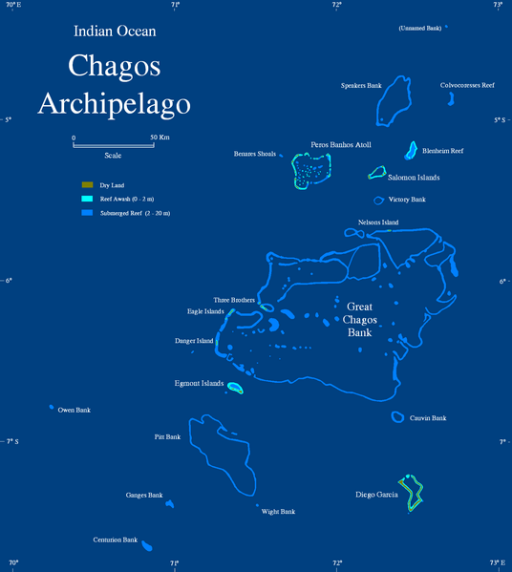
The Chagos group is a combination of different coralline structures topping a submarine ridge running southwards across the centre of the Indian Ocean, formed by volcanoes above the Réunion hotspot. Unlike in the Maldives there is not a clearly discernible pattern of arrayed atolls, which makes the whole archipelago look somewhat chaotic. Most of the coralline structures of the Chagos are submerged reefs.
The Chagos contain the world’s largest coral atoll (The Great Chagos Bank). It also has one of the healthiest reef systems in the cleanest waters in the world, supporting half the total area of good quality reefs in the Indian Ocean. As a result, the ecosystems of the Chagos have so far proven resilient to climate change and environmental disruptions. (Wikipedia)


Commenting rules and guidelines
We value the thoughts and opinions of our readers and welcome healthy discussions on our website. In order to maintain a respectful and positive community, we ask that all commenters follow these rules.